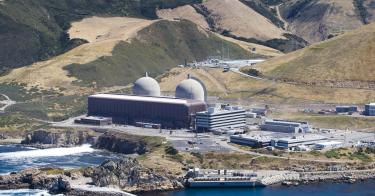Power plants close for a variety of reasons, economic as well as technical. But California has come up with a new rationale: “We just don’t want it.”
The Public Utility Commission has accepted PG&E’s plan to close Diablo Canyon, the state’s single largest power plant and the last of its nuclear reactors, once their federal operating licenses expire. PG&E determined it would be “uneconomical” to continue operations beyond that point and plans to recover the lost generation with natural gas, renewables, and energy efficiency measures.
The decision has been several years in the making and the outcome is of little surprise at this point. But what really drove this decision?
To answer that question, it’s worth exploring that word “uneconomical.” California’s electricity markets have been qualified, constrained, and manipulated in so many ways that more accurate term would be “politically unacceptable.”
Around the country, the feds have approved extending the operating licenses of more than 85 nuclear reactors. That’s because nuclear power allows utilities to generate decades of inexpensive energy, especially after recovering all capital costs.
But these basic economics no longer work in California, thanks to the state’s decision to reengineer its electricity sector so that it generates 50 percent of its power from renewables by 2030.
To make this happen, California’s energy markets are riddled with regulatory mandates and financial preferences to prop up renewable energy technologies. This is what has made Diablo Canyon’s future “uneconomical.” Nuclear power is a casualty for the sake of the cause.
The renewable energy goal is handmaiden to another mission: to reduce CO2 emissions 80 percent by the year 2050. The irony is that Diablo Canyon, a true champion of carbon dioxide reduction, has fallen victim to it.
This single plant produces 9 percent of all power generated in California, while producing virtually zero CO2 and air pollutants. Nuclear’s remarkable “green” qualities have led many early foes — such as former EPA Administrator Carol Browner — to become supporters. But not everyone is open to change. Diablo Canyon was a symbol for the anti-nuclear movement of the 1960s and 1970s, the ranks of which included Gov. Jerry Brown.
There is nothing environmentally conscientious about prematurely shutting down sound infrastructure that provides clean, low-cost, reliable electricity. Unfortunately, the ill-informed narrative of anti-nuclear extremists has won the hearts of California’s political power-brokers, and the regulatory machinery at their disposal has carried the day.
California’s future post-nuclear power is uncertain. Ironically, its thriving high-tech sector make it likely to remain home to many promising nuclear power companies racing to develop innovative, advanced nuclear power technologies. But those companies won’t find a market for their products in California: a 1976 state law bans construction of any new nuclear power plant until the federal government comes up with a site for the permanent disposal of nuclear waste — something that the feds have never done.
Also uncertain is exactly how much the retirement of the state’s largest power plant will cost Californians. California residents and business already pay dearly for those ambitious renewable energy plans.
The Golden State is home to some of the most expensive electricity in the U.S. By one estimate, Californians have paid $3 billion annually — about $300 per family of four — to inch toward the renewable goal since its inception.
Meanwhile, the environmental pay-off is far from certain. Germany has embarked on a similar mission to phase out nuclear plants, replace them with renewables, and make drastic cuts to CO2 emissions. Thus far, their efforts have produced massive subsidies for renewable energy, expensive electric bills … and increased CO2 emissions.
In their push to force renewables onto the electricity grid to meet arbitrary political goals, Californians have forced out a valuable source of reliable electricity in Diablo Canyon and made reaching their policy goals far more difficult. It’s too bad.
This piece originally appeared in the Orange County Register



